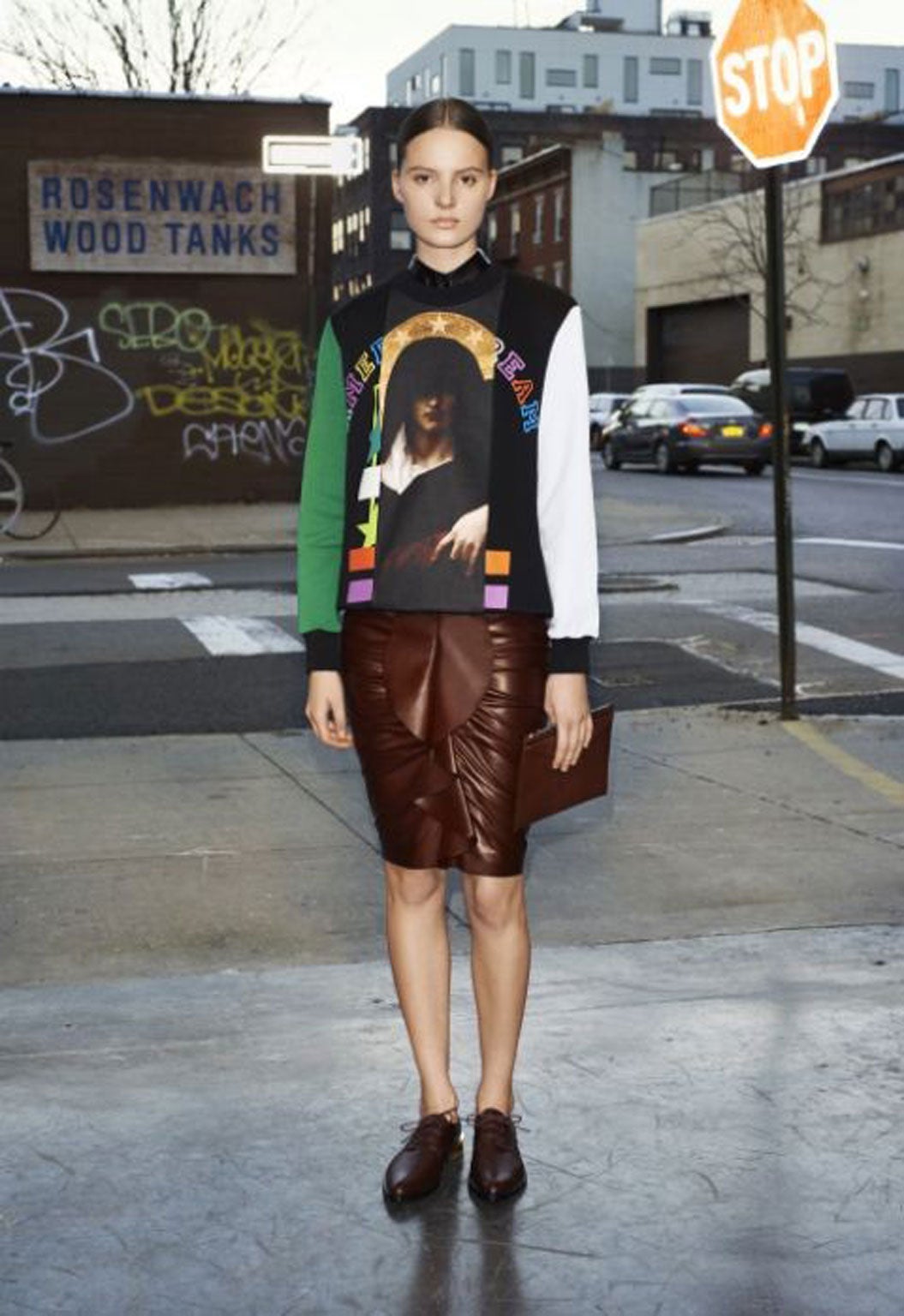Designers making their marque on the fashion scene
Although its not quite a return to the logo-laden days of old, stylised prints and artistic emblems are now selling like hot cakes, says Naomi Attwood

Are you a fashionable person?
Can you tell Chloé from Céline? Would you recognise if a handbag was from Mulberry, Miu Miu or Marc Jacobs if you spotted it on the train? What about a print? If you saw a woman walk into a restaurant wearing a Frankenstein T-shirt, would you be able to identify the designer’s signature? What about a sweater bearing a fang-baring Rottweiler?
Taken literally, a “designer label” is just that. A logo, monogram or motif that is the marque of the fashion house in question. But it is so much more to those who care, it is a symbol that the wearer is au fait with the world of fashion.
While in the past designers have taken logo-laden wares to extremes, in these days of graphic-led design, words and letters are no longer the only way to broadcast a garment’s provenance. A digital photographic print, an illustration or even an abstract pattern can be easily identified as belonging to a particular designer in the days of catwalk streaming and style-obsessed blogger culture.
London designer Holly Fulton has built her name on the back of her distinctive print designs influenced by Art Deco’s swirly precision and Sixties modernism artfully interwoven with motifs such as red lipsticks and smoking guns. In recent collections Fulton has drawn all the patterns by hand, then manipulatedthem digitally to fit on to the garments, having expanded such images into 3D embellishment.
She explains why print became such an important theme – particularly in the collections of London-based designers: “I think it allows designers more scope to create something unique with their handwriting [on it].
“Many avenues have been exhausted in terms of cutting and it’s harder to innovate in that field, whereas pattern lets you do something specific to forge and develop an individual visual style and identity.”
Fulton adds that in terms of methods, “digital print is an ideal medium for the translation of this; it has opened up the scope and range of base and finishes available to designers and essentially changed the nature of the way print is used within fashion.”
In the fashion lexicon, digital print entails a photographic image – either realist or manipulated with software – transferred directly on to fabric. Often a garment is the canvas for one complete image writ large, rather than a smaller repeated pattern. Advances in technology enable designers to push this “visual handwriting” and capitalise on it.
Fans of Christopher Kane, for example, if they can’t afford £2,000 for a dress from his collection, could perhaps save up the £200 it would cost to get one of the Boris Karloff Frankenstein T-shirts, which in fact encapsulate the theme of his spring/summer collection. Or perhaps next season a luxurious black hooded jumper printed with roses will be theirs for a steep, but not unattainable, £300.
Increasingly commonly, pictures and patterns have become the “branding” of choice for fashion designers, to the point where even the revered design houses of Givenchy and Balenciaga are at it. Jessica Bumpus, of Vogue.co.uk, traces the current trend for printed sweatshirts back to one signature print in particular: “The Balenciaga sci-fi jumpers [from autumn/winter 2012] which – with Kenzo – kicked off the sweatshirt craze. Now all high-end labels are doing sweatshirts, I think this in itself has almost become its own logo in some respects. A few seasons ago, we were starting to see sweatshirts slip in and now everyone is doing them. I think it is a nostalgic thing and right now we’re stuck somewhere between the Nineties and Millennium in our fashion referencing – and there’s something oddly appealing and strangely novel about the logo once more.”
Ah yes. The Kenzo tiger. That game changer. It was that unreconstructed, embroidered, roaring big cat – with an even bigger KENZO logo emblazoned across it, that heralded the return of the “designer logo”. It sold out in record time and was snapped by street-style photographers adorning the chests of anyone who is anyone in fashion, from bloggers to editors to off-duty models.
Entire blog posts were even devoted to the best methods of tracking one down. It’s back for the autumn/winter season in more colours and even in a hooded version.
Interestingly, in parallel to these artistic interpretations of high fashion logos and emblems, premium streetwear – in the guise of designs by Brian Lichtenberg and Boy London – logos have never been bigger, both literally and metaphorically. Where the kids on the street lead, high fashion often follows as the trickle down or bubble up theory of trends has it.
When asked if she would ever take the plunge and put out fully logoed products, Holly Fulton enthused: “I love branding and the power of a distinctive identity. I personally love Moschino from the Eighties and Nineties – it works its logo and signature into everything.
“The crass and blatant nature of having a huge logo on something really appeals to me. It has that sense of tongue-in-cheek humour that I love and I am a firm believer that you need a bit of fun in fashion.”
And you can’t argue with that.
Join our commenting forum
Join thought-provoking conversations, follow other Independent readers and see their replies
Comments
Bookmark popover
Removed from bookmarks